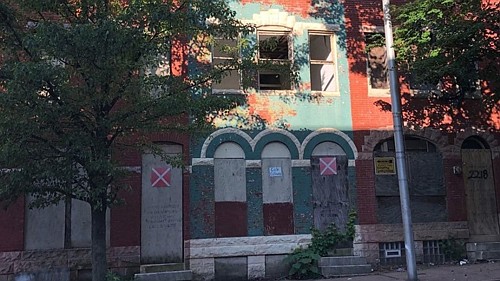It was at the 2200 block of Druid Hill Avenue that the legendary Cab Calloway developed the personality of “Sportin’ Life,” from Porgy and Bess with his gang of friends.
The style, outlook, musical performance traits learned on the streets of Druid Hill Avenue, would later impact dozens of great singers such as James Brown, Michael Jackson, Elvis Pressley, and Mick Jagger.
“The male singer with a strong bravado, who combines a passionate ‘reporting on current events’ with music, dance, singing and an emphasis on dancing to such a degree that audiences lose control, really started with Cab Calloway in the 20s.” his grandson Peter Brooks, stated in a news release.
But, just who is Peter Brooks, and where did he come from? That’s what members of the Druid Heights Community Development Corporation (DHCDC), a nonprofit organization, want to know.
In a virtual meeting held this week, the DHCDC whose overall goal is to accelerate the revitalization of the neighborhood with self-empowerment, employ- ment and economic opportunities all while creating a stable and safe community environment, said Brooks has perpetuated false narratives about the planned demolition of the dilapidated home Calloway lived in nearly 100 years ago.
They argue that the home is not Michael Jackson’s Neverland or Elvis Presley’s Graceland but forever unkempt and uncared for, it must be demolished along with other properties, so plans to beautify the neighborhood can continue.
Among the multi-million dollar and seemingly much-needed makeover of the community, is a park honoring Calloway.
“Do we even know that Peter Brooks, who just happened upon the scene all of a sudden, is a relative of Cab Calloway?” Anthony Pressley, executive director of DHCDC said in the virtual meeting.
The DHCDC also pointed to an October 2019 letter written by Cabella Calloway Langsam, Calloway’s youngest daughter and president of the Cab Calloway Foundation, who supported the nonprofit’s efforts to revitalize the community and creating a park to honor her late father.
“The redevelopment of the area by the community-minded DHCDC would both honor Cab Calloway and benefit the community with vital green space,” Langsam wrote.
Jacqueline Cornish, a DHCDC executive board chair, said the mission of DHCDC is to cause, encourage, and promote community self-empowerment through the development of economic, educational, employment, and affordable housing opportunities.
She said Brooks’ late emergence is causing a costly legal battle that shouldn’t be necessary.
“We’ve been planning this for close to five years. What happened after Peter Brooks came into the community? He was on board but somewhere along the line, he changed his mind,” Cornish said. “Today, we find ourselves being overwhelmed, and nobody has asked the community or the organization how this came about. It’s just been negativity coming from the other side. So, we wanted people to hear our side and hopefully get some fair reporting on this issue.”
Pressley added that Brooks “popped up out of nowhere, offering his support and then changed his mind.”
“He’s a media expert, taught at Coppin State, and we don’t necessarily have the ability to go up against this guy because he knows how to get publicity,” Pressley said. “They are parading as preservationists but they’re community antagonists. We have been working on this for more than five years and we have put over $750,000 into stabilizing the block, and the community has been excited about the green space we put in. There’s fencing around the building right now, and we have people ready to do the work.”
Further, Cornish added that the former Calloway house has never been declared a historic site and, although special consideration has been given, the lack of designation should allow for crews to demolish and build something more palatable for residents.
“Under no circumstances do we want anyone to think we don’t love and respect our black icons. We honor them,” Cornish said. “If you go through the community, you will find sites where the organization has initiated recognition. For people to come into this community, who have never put a finger into helping, and all of a sudden you want to say ‘no.’ You are not the final arbiter as to what this community needs.”
